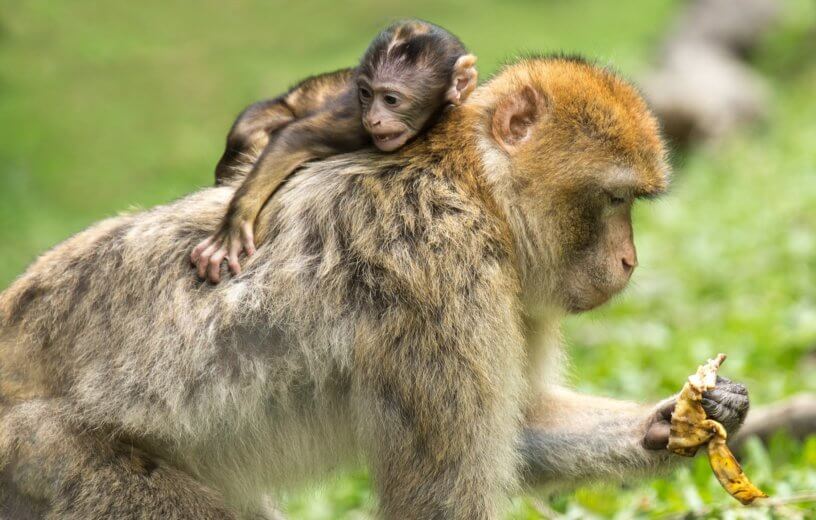BOULDER, Colo. — A fatal virus causing Ebola-like symptoms in monkeys is “poised for spillover” to humans, scientists warn.
A new study reveals that the animal virus has reportedly figured out how to gain access to human cells, multiply itself, and evade the parts of the immune system that defend people against animal viruses. Writing in the journal Cell, scientists note that this is “pretty rare.”
The University of Colorado Boulder team is watching the virus closely and calling for vigilance, evoking parallels to HIV — which they believe originated in African monkeys. So far, no human infections have been reported and it is unknown what toll it would have if it infected a human.
‘We should be paying attention to it’
However, study authors say watching arteriviruses like this could potentially avoid another pandemic. Arteriviruses usually establish infections in horses, pigs, rodents, and primates. Senior author Sara Sawyer, a professor of molecular, cellular and developmental biology at CU Boulder says this virus’s capabilities are unusual.
“This animal virus has figured out how to gain access to human cells, multiply itself, and escape some of the important immune mechanisms we would expect to protect us from an animal virus. That’s pretty rare,” says senior author Sara Sawyer, a professor of molecular, cellular and developmental biology at CU Boulder, in a media release. “We should be paying attention to it.”
There are thousands of unique viruses circulating in animals across the globe, but most cause no symptoms. Over the past few decades, however, more and more animal viruses are jumping to humans, wreaking havoc on unfamiliar immune systems with no experience protecting against them.
These include Middle Eastern Respiratory Syndrome (MERS) in 2012, Severe Acute Respiratory Syndrome coronavirus (SARS-CoV) in 2003, and SARS-CoV-2 (the virus that causes COVID-19) in 2020.
The virus targets one particular molecule
Prof. Sawyer is a veteran in the field, having studied viruses leaping from animals to humans for 15 years using laboratory techniques and tissue samples from wildlife across the globe. This study focused on arteriviruses which are common in human pigs and horses but understudied in chimps.
They focused on simian hemorrhagic fever virus (SHFV), responsible for deadly outbreaks in captive macaque colonies since the 1960s by causing a lethal Ebola-like virus disease. Prof. Sawyer’s work demonstrated that a molecule called CD163 plays an important role in simian arteriviruses’ biology, allowing it to invade and infect target cells.
Using laboratory experiments, they discovered the virus was unusually skilled at latching onto the human version of CD163 to get inside human cells and rapidly make copies of itself. Like human immunodeficiency virus (HIV) and the simian immunodeficiency virus (SIV) that came before it, simian arteriviruses appear to attack immune cells to disable important defense mechanisms and take long-term control in the body.
Cody Warren, assistant professor in the College of Veterinary Medicine at The Ohio State University, says these similarities between SIV and this virus are significant.
“The similarities are profound between this virus and the simian viruses that gave rise to the HIV pandemic,” Warren explains. “Just because we haven’t diagnosed a human arterivirus infection yet doesn’t mean that no human has been exposed. We haven’t been looking.”
Professors Warren and Sawyer note that in the 1970s no one had heard of HIV either. The team stresses, however, that another pandemic is not imminent and there is no need to be alarmed. Prof. Sawyer adds there is no guarantee the virus will jump to humans.
COVID is just the latest virus in a disturbing trend
Despite that, the researchers are certain that more viruses will jump to humans and they will create new diseases. They are also urging the global health community to prioritize simian arterivirus studies to create blood antibody tests for them and potentially begin surveilling human populations living in close contact with animal carriers.
A wide range of African monkeys carry high viral loads of many arteriviruses and some of these species scratch or bite people when they live close to one another. Scientists now know that HIV was created by SIVs infecting monkeys in Africa, and likely jumped to humans in the early 1900s. When it began killing young men in the 1980s in the United States, there were no treatments or tests. Prof. Sawyer says COVID is just the latest spillover event from animals to humans.
“COVID is just the latest in a long string of spillover events from animals to humans, some of which have erupted into global catastrophes,” Sawyer concludes. “Our hope is that by raising awareness of the viruses that we should be looking out for, we can get ahead of this so that if human infections begin to occur, we’re on it quickly.”
South West News Service writer Pol Allingham contributed to this report.

